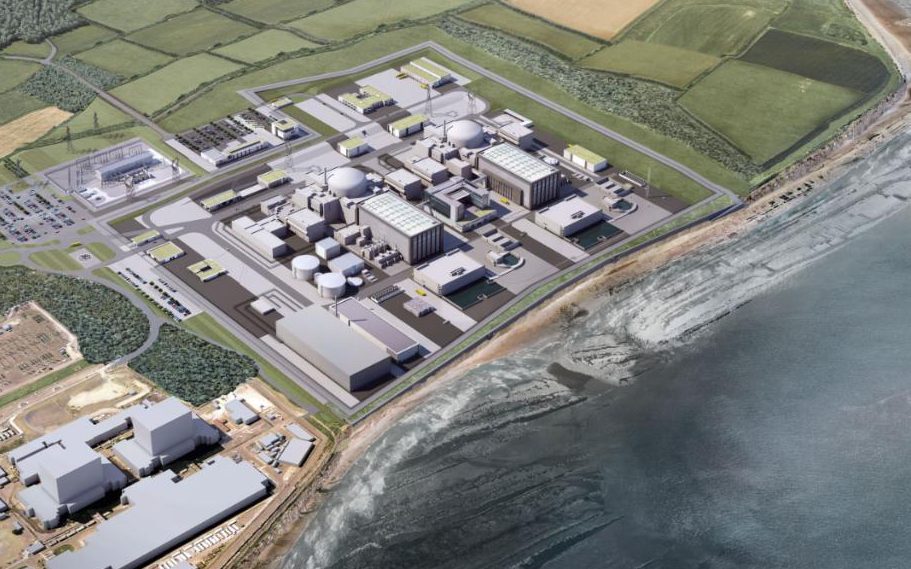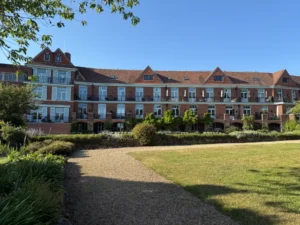Sign today
The much-delayed construction of two reactors at Hinkley Point in Somerset is expected to be given the go-ahead by the board of the French energy giant at a meeting in Paris on This afternoon afternoon, despite the opposition of unions.
The decision will pave the way for Greg Clark, the new business and energy secretary, to sign a 35-year subsidy deal, marking the point of no return for the UK on the highly controversial project that could eventually provide 7pc of the country’s electricity.
If the Government were to change its mind once the contract is signed, the UK could be liable to pay French state-controlled EDF billions of pounds in compensation.
The subsidy contract guarantees EDF a price of £92.50 for every unit of electricity produced for 35 years, a deal that on current estimates will see consumers pay £30bn in subsidies, over and above the wholesale price of power.
Ministers estimate that every household will pay about £10 a year on their energy bills to fund the subsidies when the plant starts generating.
What is the real story?

Politics:
Our last Chancellor, may be out of Number 11 may have gone, but the spectre of his misguided energy policy could haunt Britain for decades, and at Hinkley in north Somerset, for millennia.
Theresa May’s government urgently need to seize the opportunity to minimise the damage, an opportunity which only lasts while her government can portray them as the last regime’s errors, and disown them.
This week we learned that the UK has lost 12,000 jobs in the solar industry. This economic disaster was due to Osborne’s ideologically driven subsidy cuts to what was a vibrant and growing sector of the economy. The ideology in question was not opposition to state subsidies, of course. Osborne has lavished new subsidies on the fossil fuel industry, just as the other leading industrialised nations have started to cut them, and Hinkley Point C is an Olympic-sized subsidy swallower. Osborne simply didn’t like renewables, despite onhore wind farms providing the cheapest electricity in Britain, and solar looking like the technology most likely to undercut them.
Whether this was due to powerful empathy with the small minority of voters who object to renewable energy, a gross misunderstanding of the economics, or an unhealthy affinity with the larger, more established firms pushing older technologies, is difficult to say. But the initial bad decisions became calcified into commandments as the government was forced to defend them repeatedly against an array of bewildered experts.
To avoid paying a low level of subsidy on technologies whose prices were dropping dramatically, Osborne’s Treasury made them rain on the one technology whose costs just keep on going up.
Hinkley C had been described as “the most expensive object on Earth” many months before the National Audit Office (NAO) revealed that subsidies would be nearly five times as big as had been previously advertised. The avalanche of subsidies has produced an ongoing state aid dispute with the UK launched by Austria, a new state aid investigation by the European commission into the reactor builder Areva, and a potential state aid dispute over France’s plans to make up EDF’s credit shortfall on the project.
Advertisement
Hinkley C has now become so uneconomic that it has been condemned in editorials in the normally pro-nuclear Times, Telegraph and Mail, and many EDF executives and employees think it might be a bad enough plan to completely destroy the state-owned utility.
Today EDF’s board will make a widely trailed decision on whether to proceed with this “investment”. After years of delay, this unseemly hurry looks a bit like panic.
The tide has been turning against Hinkley ever since the problems at Olkiluoto in Finland and Flammanville in France, Hinkley’s elder siblings, became horribly apparent. Now, with a new UK government not so publicly committed to the project, EDF may be feeling that its chances of getting Hinkley built are likely to diminish even more quickly. Osborne seemed willing to countenance almost anything in his desperation to get his legacy built, but Philip Hammond might look at the figures and the alternatives, and start looking for a way out.
To be clear, the Hinkley subsidies are not bungs to power brokers or inexplicable government largesse; Hinkley’s problems are so severe and so numerous that it requires potentially illegally high levels of state support in order for it to be built. Listing them all – the legal risks, the engineering risks, the liability risks, the credit risks, the safety risks – would take so long there would probably be some new ones before I’d finished. But they all spring from a reactor design, which has so far proved impossible to make work, and has even been described as “unconstructable” by an engineering professor.
One of the few arguments Hinkley’s defenders had left was that offshore wind, a technology that has the potential for huge amounts of power, but has received a tiny fraction of nuclear’s research and development outlay in both time and money terms, was still more expensive than Hinkley. However, even this last advantage has now evaporated. The NAO has claimed this month that new offshore wind would actually be cheaper than new nuclear energy, a claim confirmed by Danish firm Dong Energy building two offshore windfarms for €72.70 (£61.10) a megawatt hour, compared to Hinkley’s £92.50.
That eye-watering price is guaranteed to Hinkley for 35 years from the plant becoming operational, so billpayers will still be cursing the ghost of austerity past in the 2060s. But that’s just the short-term cost. Hinkley will produce yet more nuclear waste to add to our huge, hazardous and homeless stockpile, and so the legacy of Osborne could haunt us for many hundreds of thousands of years.
And all this, all these costs, risks and subsidies, are now no more than a doomed attempt to save the face of an ex-chancellor whose reputation was finally taken off life support a month ago.
Unless the new government sees sense and calls out their predecessor’s mistakes for what they are, two generations of UK consumers will be left footing the bill for the most expensive act of political face-saving in the history of British politics.
EDF
EDF is expected to confirm that it still expects to produce first power from the plant in 2025, despite the delay in taking a final investment decision that had been due before the end of last year.
Labour’s shadow energy secretary Barry Gardiner issued an eleventh-hour plea to the Government not to sign the contract in its current form, which gives EDF significant leeway to delay completion of the project for up to eight years.
EDF can still secure the full 35-year contract if Hinkley produces first power any time until 2029. Thereafter the contract would be shortened by one year for every year further delay, but could only be cancelled without penalty for the UK if Hinkley was still not generating by 2033.
Mr Gardiner said it was “extremely dangerous” of the Government to give EDF “an open-ended cheque” for the construction of the reactors and said it should face penalties for every year of delay beyond 2025.
“In all it could be 16 years delayed and we would still be paying it a premium price for energy when we presumably don’t need it,” he said.
Jesse Norman, a junior minister at the business and energy department, this week reiterated the Government’s support for the project.
“Hinkley Point C is a good deal for consumers – it will provide reliable energy at an affordable cost, powering nearly six million homes for around 60 years and creating more than 25,000 jobs,” he said.
Hinkley the Numbers
- £18 billionEDF estimate of construction cost
- 3.2 GWCapacity of plant
- 5.8 millionNumber of homes it could power
- 5,600People to be employed on site at peak construction
- 25,000Total number of jobs that could be created
- £92.50Price to be paid (in 2012 money) for each MWh unit of electricity – more than double the current market price of power
- 35 yearsDuration of subsidy contract agreed by ministers
- 2025Earliest expected date for first power to be generated
Chance on on time and on budget success – 0%




